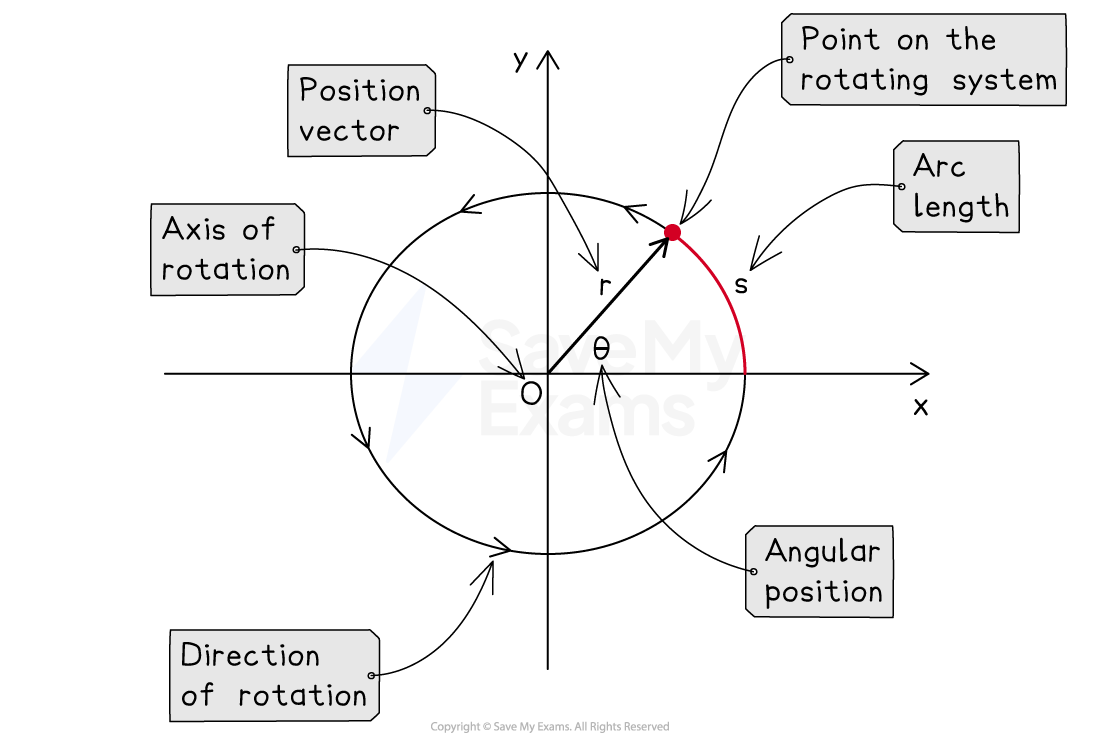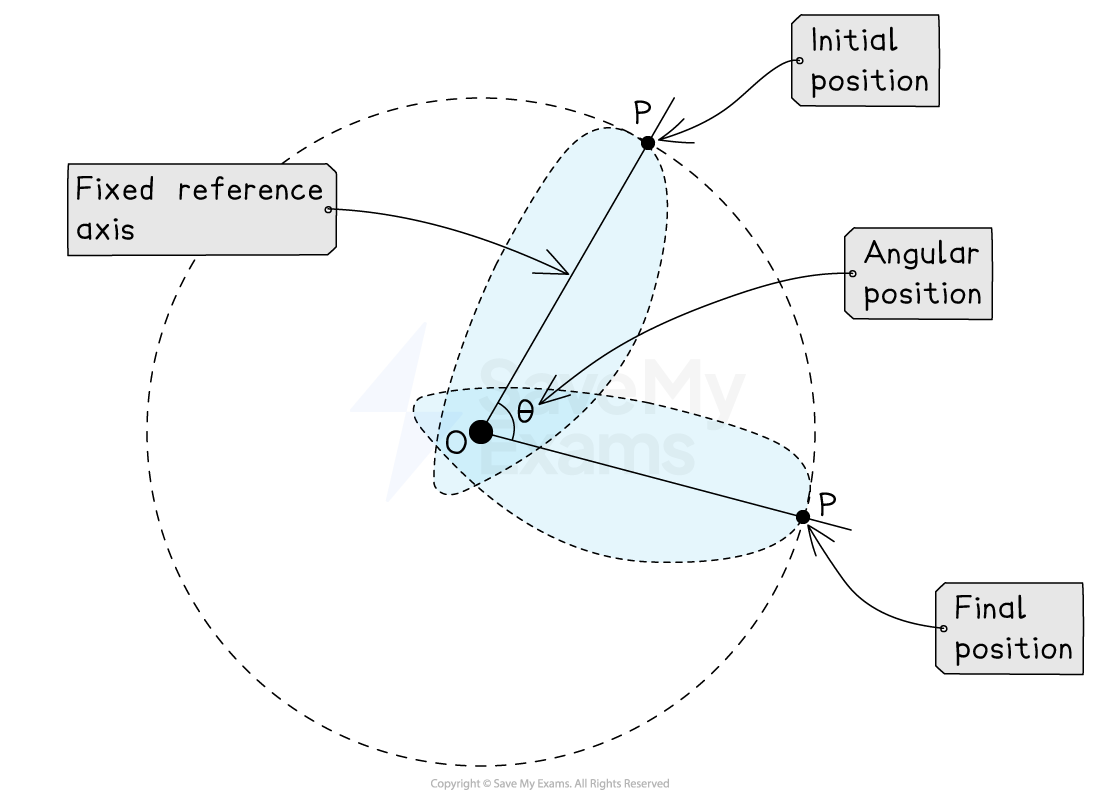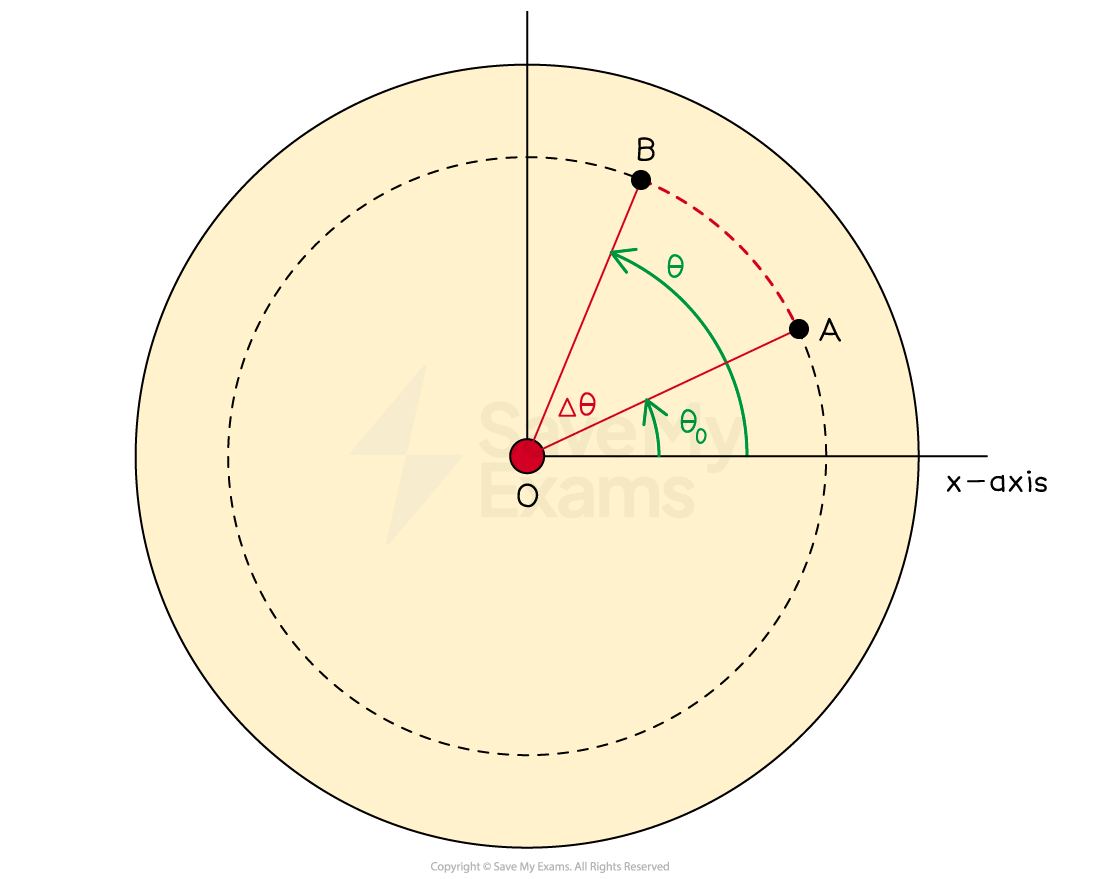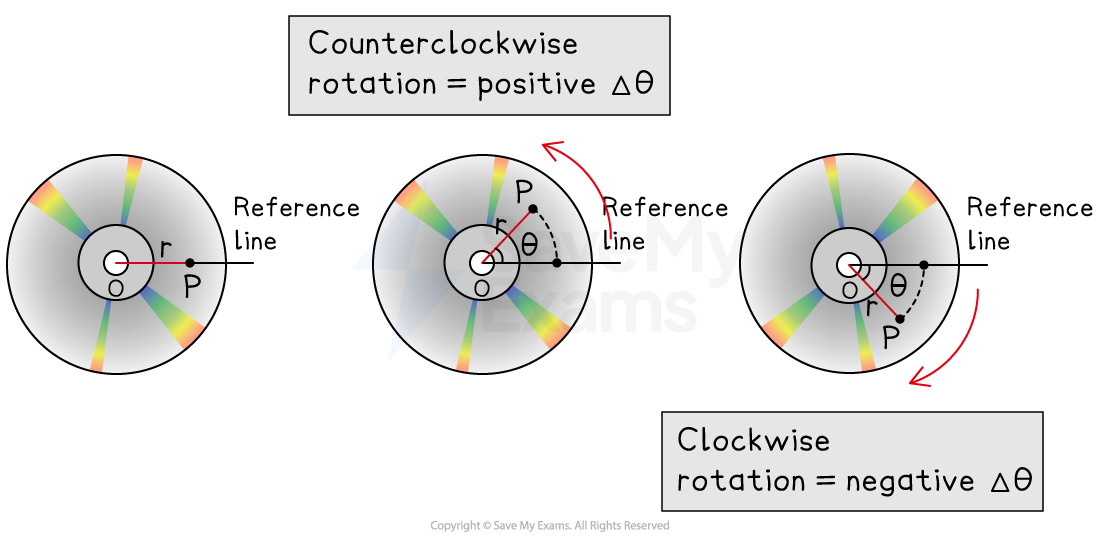Angular Displacement (College Board AP® Physics 1: Algebra-Based): Study Guide
Angular displacement
Angular position
Angular position is defined as:
The rotational location (angle) of a point on a rigid system, relative to a reference point
In linear motion, the position of an object is measured relative to the origin of a coordinate system
In rotational motion, the angular position of a point on a rigid system is measured relative to the axis of rotation

The angular position of a point on a rigid system
is measured relative to a reference line
As the point moves, the only quantity that changes is
The reference line could be a coordinate plane or another position vector
For example, point A is at an angle of 30° with respect to the x-axis
Or, point P on an extended rigid object rotates clockwise by 75° with respect to its initial position vector
Rotation of an extended object about a fixed reference axis

The relative nature of a point's angular position gives it a directional component
As a result, angular position is a vector quantity with both magnitude and direction
Angular displacement
Angular displacement is defined as:
The change in angle through which a point on a rigid system rotates about a specified axis
The angular displacement of a rotating rigid system describes the difference in angular position between a point's starting position vector and its finishing position vector
This can be described by the equation:
Where:
= angular displacement, in
= final angular position, in
= initial angular position, in
Defining angular displacement

Direction of angular displacement
Like linear displacement, angular displacement is a vector quantity with both magnitude and direction
The direction of a system's angular displacement can be described as clockwise or counterclockwise with respect to a given axis of rotation
Mathematically, either direction can be assigned as positive only if the opposing direction is negative
For example, consider a disc rotating about an axis of rotation at its center, where counterclockwise is defined as the positive direction
If the disc rotates counterclockwise, its angular displacement is positive
If the disc rotates clockwise, its angular displacement is negative

Units of angular displacement
Angular displacement is measured in radians
A radian, or rad, is defined as:
The angle subtended at the center of a circle by an arc equal in length to the radius of the circle
It can be expressed as:
Where:
= angle subtended from the center of the circle, in
= arc length, in
= radius of the circle, in
Definition of a radian

Any angle in degrees can be converted into radians using the equation:
Radians are commonly written in terms of π, where:
360° is equivalent to
270° is equivalent to
180° is equivalent to
90° is equivalent to
Examiner Tips and Tricks
You should be aware that a radian is not technically a unit. It is a dimensionless ratio, as the units of arc length and radius cancel. This means that an angle described in radians has no unit and does not need to be converted from one unit to another. However, we often write “rad” after an angle measured in radians to remind ourselves that the quantity describes an angle.

Unlock more, it's free!
Did this page help you?